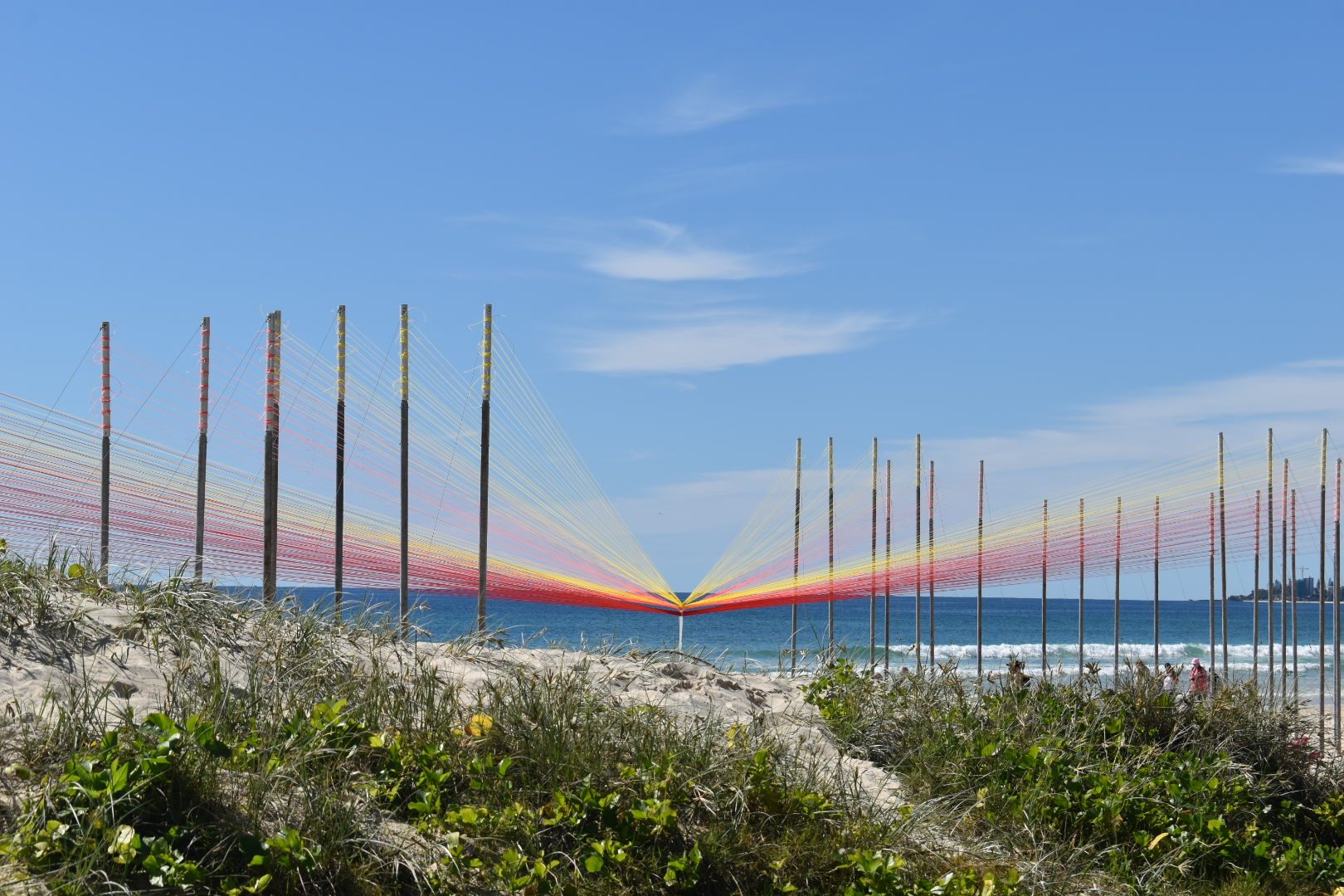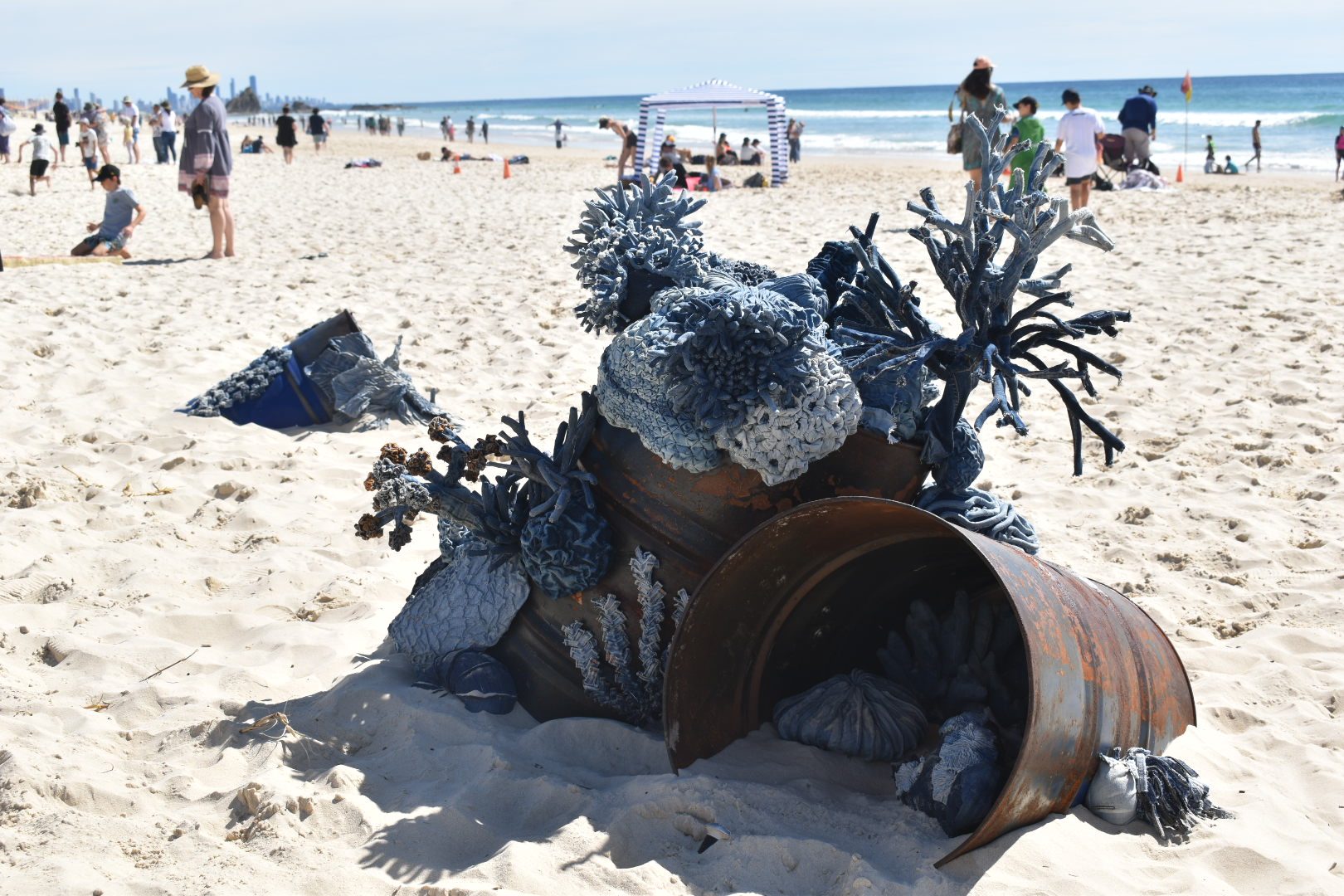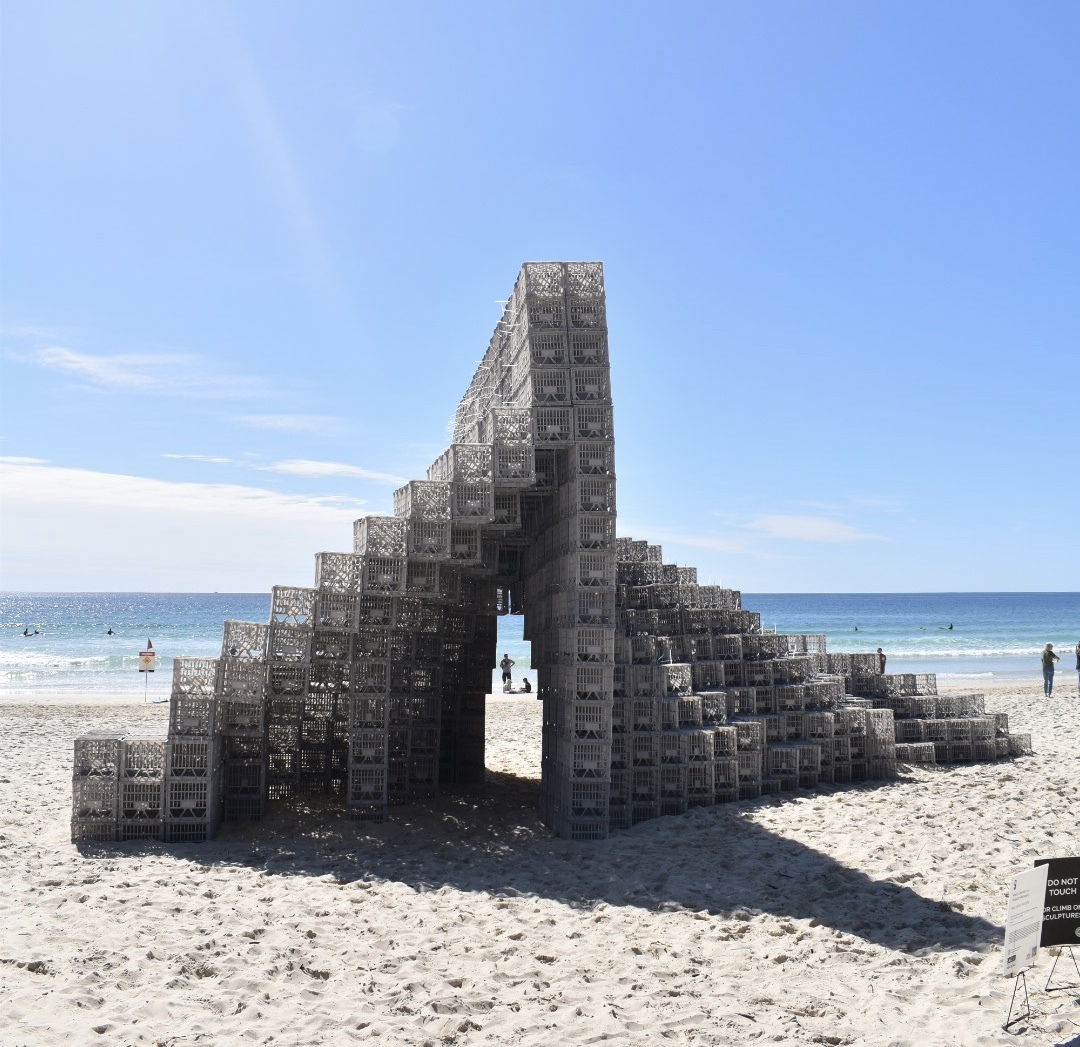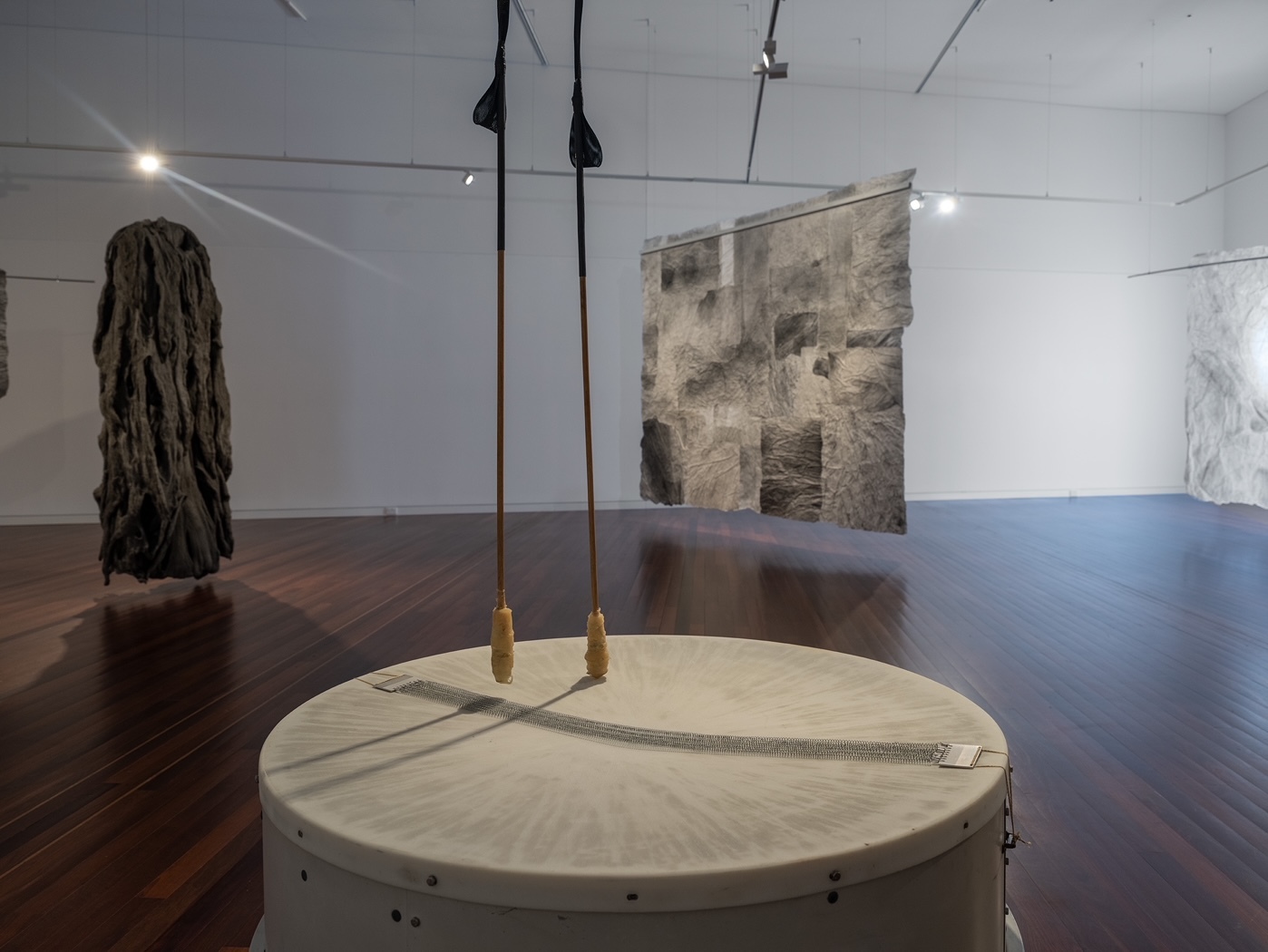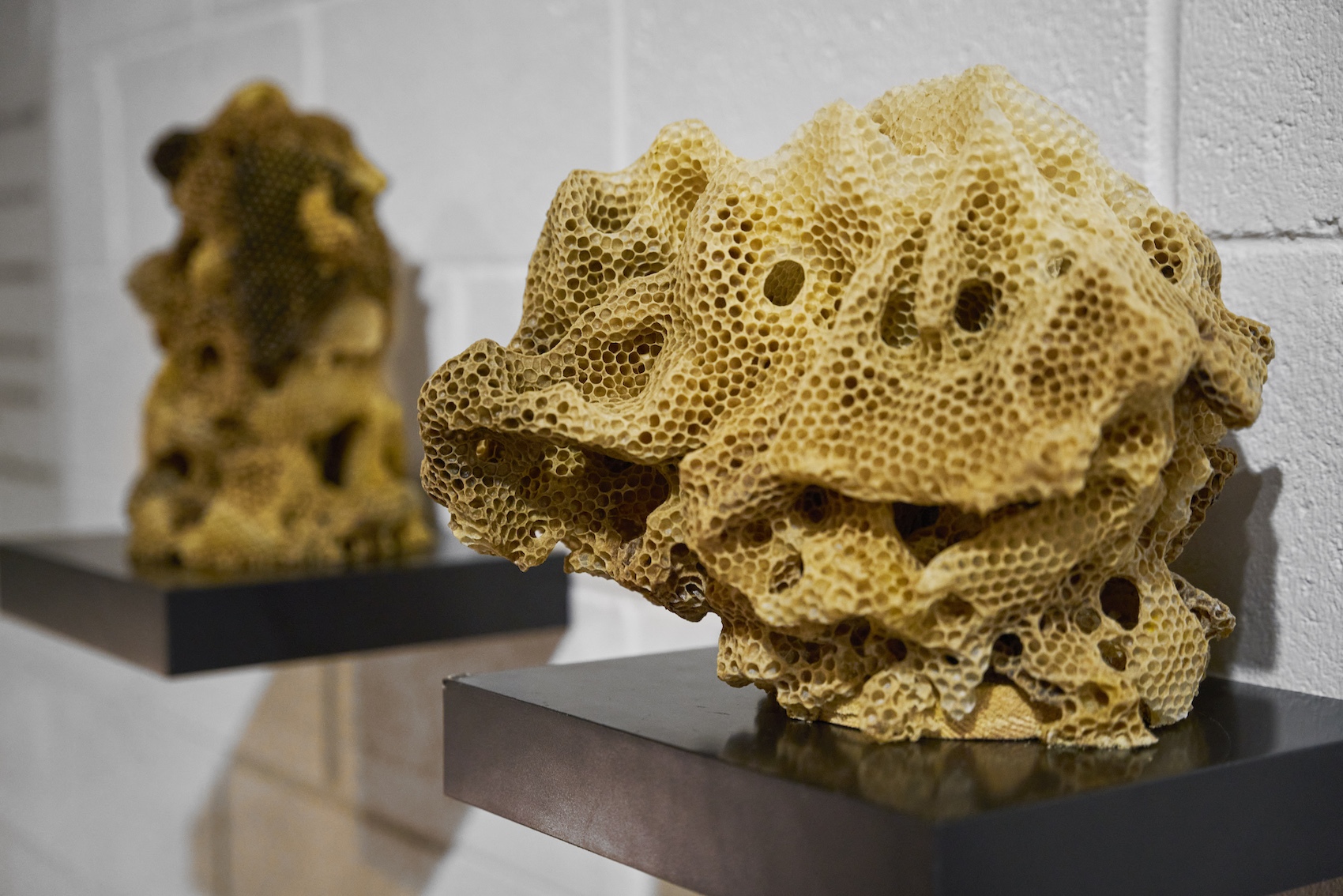Surfers, dog walkers, aeroplanes, nippers, sausages sizzling on the barbie waiting to be eaten. It’s Sunday morning on Currumbin Beach where the annual Swell Sculpture Festival is back again, and I’m walking barefoot between artworks thinking about how different this exhibition would be inside a gallery. In a gallery, artists are afforded the convenience of a controlled climate and the neutrality of white walls, allowing their work to command the viewers’ attention. But if you are a parent with young kids, galleries aren’t straightforward places for spending lengthy periods of time, and it’s this inclusivity and family friendliness that inspired founders Natasha Edwards and Kylie Mitchell-Smith to create the first Swell festival in 2002. Starkly different to a white gallery, Currumbin Beach is a colourful, dynamic, living canvas spanning from Elephant Rock to the iconic surfing destination known as The Alley.
Alejandro Propato’s Permanent Sunrise is one of the first, and largest, works you see when walking toward the festival. Yellow, pink and red lines of nylon are stretched impossibly taut, emulating the sun’s rays. Propato gives the moment of sunrise a sense of permanency, or at least suspends it, via vertical aluminium and steel pipes and wire for the duration of the festival. Propato hands agency to us the viewer, and our smart-phones, to capture this moment of beauty to our phone memory (a sort of heavenly space where all photo-worthy sunrises go to rest). I love that Propato points to the familiar, human experience of yearning to make the fleeting permanent: youth, beauty, relationships. The success of Propato’s optimistic and hopeful work is in giving us permission to become the artist by suspending a fragment of time.
A little closer to The Alley, Milk Crate Pavilion by Philip Darnton and Nelson Michaels, is a giant structure, transforming the humble milk crate into a versatile and strong singular form. The rhythmic layers of crates, which progressively reach higher toward the sky, are influenced by the patterns imprinted on the sand by the ebb and flow of an outgoing tide. This height gives it an undeniable presence on the beach, making it one of the festival’s most memorable works. Walking into the installation, viewers encounter each other and a soundtrack of ambient, tranquil music. Inside the pavilion, it is interesting to watch as others are drawn to its entrance, awe-inspired eyes to the ceiling and mouths ajar. The work provides a surprising amount of shade and ventilation, a cooling relief from the sun’s scorching rays similar to walking past the milk fridge in Woolies. Both a social sculpture and an unexpectedly spiritual and restful space, Milk Crate Pavilion attracts beach goers with a range of life enhancing necessities: shelter, connection, socialisation, a place to retreat and feel cool sea breezes. The experience of being inside the sculpture is calming and life affirming.
At the other end of the beach, toward the Elephant Rock Surf Club, sits the best and most thought-provoking work of the exhibition: a recycled denim sculpture, Salvage/Selvage, by London-based artist Brigid Vidler. Three old rusted oil drums are covered in curious bleached-blue forms that become clearer on closer inspection. Salvage/Selvage won the Neumann-Family Swell Sculpture Award and it’s no wonder as Vilder’s hand sewing skills are exceptional. She manipulates the denim material to find new forms and possibilities via deconstruction and reconstruction. She carefully unpicks, pleats, and sews sections of pre-loved jeans: belt loops are folded, edges are overlocked, and threads are ingeniously reconsidered to describe the intricate edging and textures of coral forms. Many works in the festival use recycled objects, but this work also points to a bigger issue: the coral bleaching off Australia’s coastlines. Technically and conceptually sophisticated, the work is suggestive and expansive.
Vidler’s work, along with others in the festival, reinforces the delicate balance that our environment finds itself in. The artists’ mindful working with the surroundings to make meaning and add value inspired me, and likely the throngs of other Sunday viewers, to be grateful for this special place that we call home. Walking on the land, feeling the sand beneath our feet, receiving the cathartic sea breeze and being energised by the vibrant sun: Currumbin Beach is an ideal place to engage with art. Just don’t forget to take your sunglasses!
Thoughts from Sally Salmon, emerging arts writer, artist, and educator.


